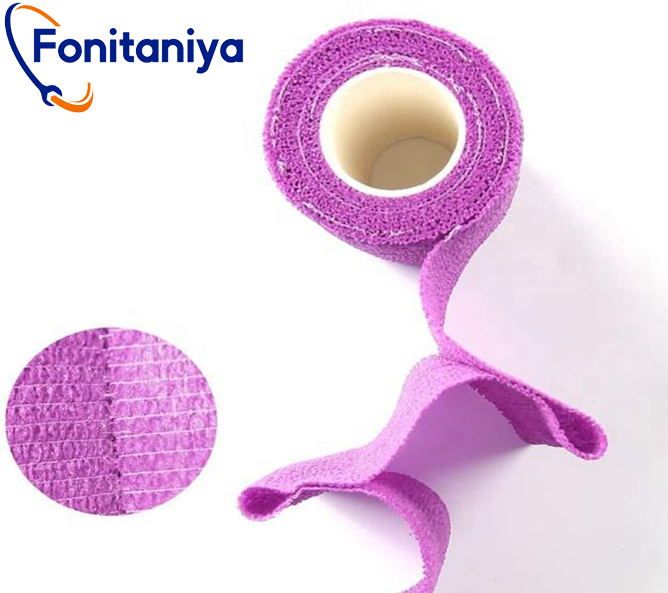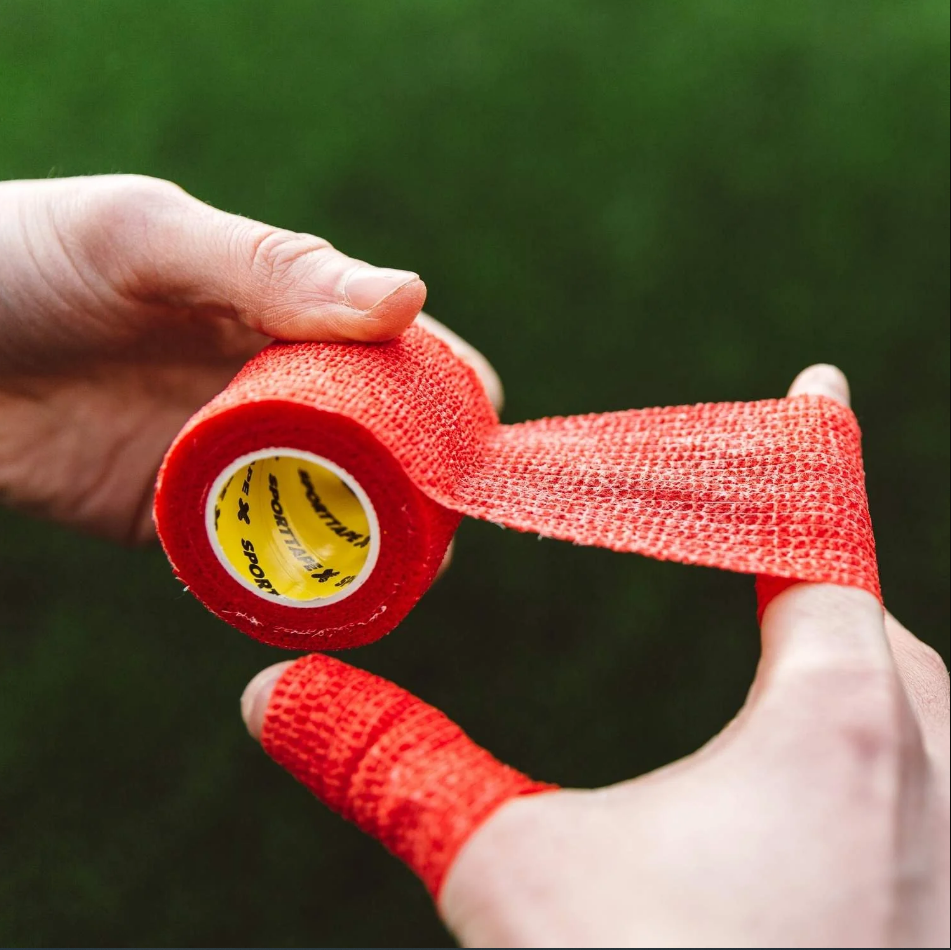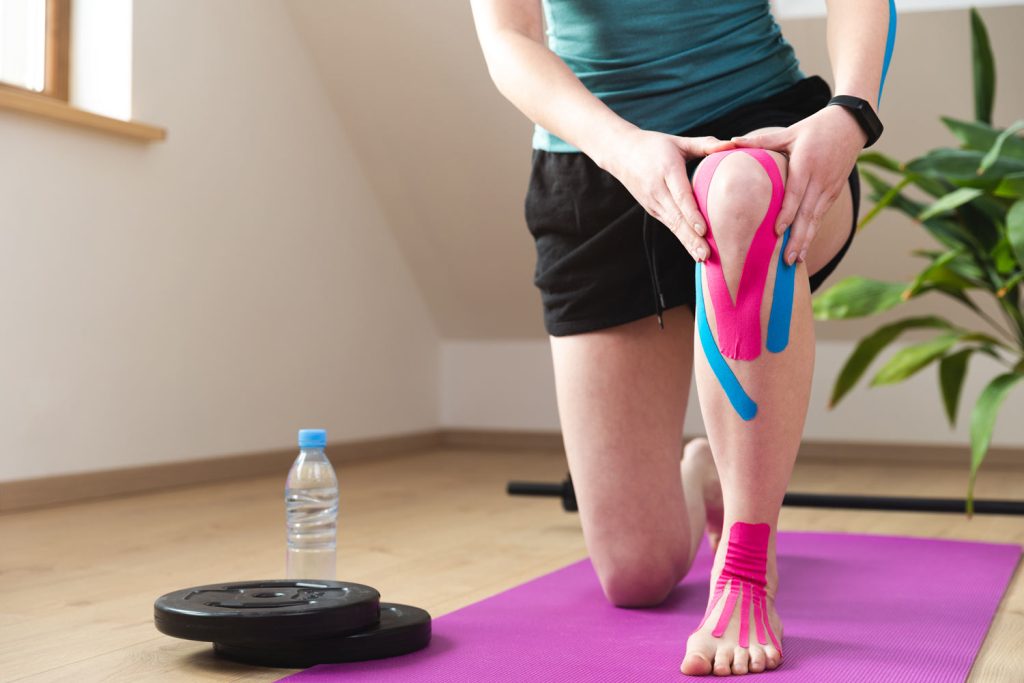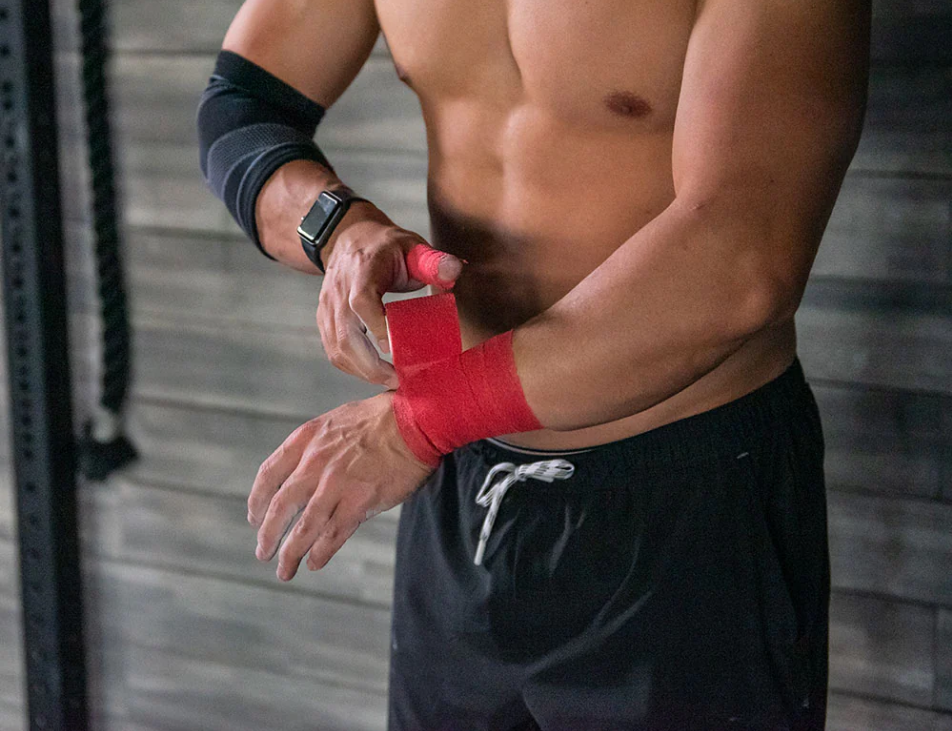Why Self-Adhering Bandage Is a Good Choice for Your Shelf?
Self-adhering bandages, A.K.A. cohesive bandages, are a popular product among sport communities. Here’s a detailed look into why self-adhering bandages are a prudent choice for your business inventory:
Popularity: The demand for self-adhering bandages has soared, particularly in the last decade. Sales data show a consistent year-over-year growth of 7%, driven by increasing applications in sports and home care. Their ease of use makes them a go-to choice for both quick fixes and long-term care, reflecting a broad and growing user base.
Profit Margin: From a business perspective, self-adhering bandages present an attractive profit opportunity. The average cost of production per unit ranges from $0.30 to $0.50, depending on the materials and quantity produced. However, the retail price ranges from $1.50 to $5.00 per unit, allowing for a substantial markup. Furthermore, the repeat purchase rate of these bandages is high due to their consumable nature, enhancing lifetime customer value.
Low Storage Cost: Due to their compact and lightweight design, self-adhering bandages require minimal storage space, which reduces warehousing costs significantly. Comparatively, they occupy about 25% less space than traditional bandages with clasps and fasteners, translating to lower logistics costs.
At Fonitaniya™, we provide cost-effective and popular self-adhering bandage for you business. If you are interested, please click in the link.

Self-adhering bandage can be a competitive category for your shelves.
Introduction to Self-Adhering Bandages
What Do Self-Adhering Bandages Do?
Self-adhering bandages simplify the process of bandaging. They are designed to provide support and compression, making them ideal for managing sprains, strains, and other minor injuries. Their self-adhering nature eliminates the need for additional fastening which can be a hassle during emergencies or active sports.
Key Features of Self-Adhering Bandages
Self-adhering bandages are designed with several distinctive features that cater to both ease of use and effective support:
Breathability: These bandages are constructed from porous materials that promote air circulation, crucial for maintaining skin health and speeding up the healing process of wounds or injuries. This feature helps prevent moisture buildup, which can lead to skin maceration and discomfort.
Flexibility: The elasticity of self-adhering bandages ensures they can be stretched and molded to fit different body parts snugly. This flexibility allows for a custom fit that supports the area without hindering mobility, making it ideal for joints that require a full range of motion such as knees, elbows, and wrists.
Comfort: Unlike traditional bandages, self-adhering bandages are made from soft, lightweight materials that feel gentle against the skin. This minimizes the risk of chafing and irritation, especially during prolonged use.
Self-Adhesion: One of the most significant advantages is that these bandages stick to themselves without the need for adhesive tapes or clips. This self-adhesive quality ensures easy application and removal, and it prevents the bandage from sticking to the skin or hair, making it pain-free to remove or adjust.
Durability and Support: Despite their lightweight and comfortable design, self-adhering bandages provide substantial support and compression. This makes them suitable for managing sprains, strains, and swelling by stabilizing the affected area and promoting blood circulation.
Water Resistance: Many self-adhering bandages are water-resistant, allowing them to be worn during showers, baths, and even swimming without coming loose. This water resistance also makes them more durable in various weather conditions and during intense physical activities.

Self-adhesive bandages are breathable, comfortable and water resistant.
How Cohesive Bandages Revolutionize Sports Medicine
Self-adherent Bandages for Quick Injury Response
In the fast-paced world of sports, quick and effective response to injuries is crucial. Self-adhering bandages can be rapidly applied, providing immediate support and beginning the recovery process without delay. Athletes from various disciplines report faster recovery times and reduced discomfort when using self-adhering bandages compared to traditional taping methods.
If you are interested in buying self-adhering bandages for personal trials, you can go to Walmart online shop.
The Engineering Behind Self-Adherent Bandages
Material Characteristics of self-adhesive
The selection of materials in self-adhering bandages is crucial to their functionality and user comfort. These bandages are primarily made from a blend of cotton and spandex, which provides both strength and stretchability. The cotton component ensures breathability and comfort against the skin, while spandex offers the necessary elasticity to conform to different body parts without restricting movement.
To cater to a wide range of users, including those with sensitivities, manufacturers often offer both latex and latex-free versions. The latex-free variants use synthetic rubber or other hypoallergenic materials, which are essential for users with latex allergies.

The Mechanism Behind Self-Adhering Bandages
The crucial aspect that enables the self-adhering property is the application of a pressure-sensitive adhesive coating. Unlike traditional adhesives that stick to anything they touch, the adhesive on self-adhering bandages is designed to only react to the touch of the same or similar materials.
When you wrap a self-adhering bandage around a limb, the adhesive layers press against each other, causing the bandage to cohere. This cohesion happens due to microscopic hooks or loops that form part of the adhesive compound, which catch on each other when pressed together. This mechanism allows the bandage to be easily applied, adjusted, and removed without leaving any residue on the skin or hair.
Comparison with Athletic and Kinesiology Tape
Comparison Chart
If you are managing shelves and wonder what is the difference between this three, the following comparison would help you. All the prices are in USD.
| Features | Self-Adhering Bandages | Athletic Tape | Kinesiology Tape |
|---|---|---|---|
| Material | Elastic, cotton, or polyester fibers | Cotton with adhesive backing | Cotton and elastic fibers with adhesive |
| Usage Duration | Multiple days, disposable | Single use | 3-5 days |
| Repurchase Frequency | High (frequent injuries or daily use) | Moderate (regular athletic activities) | Moderate (depends on activity level) |
| Profit Margins | Medium to high | Low to medium | Medium |
| Price Range | $2 – $5 per roll | $1 – $4 per roll | $3 – $10 per roll |
| User Demographics | Athletes, elderly, general healthcare | Professional athletes, sports teams | Athletes, physiotherapy patients |
| Primary Use | Quick injury response, no residue | Restrict movement, provide support | Support muscles, enhance motion, therapeutic |
Athletic Tape vs. Self-Adhering Bandages
Athletic tape is primarily used for stabilizing and supporting joints during high-impact and strenuous activities. It restricts movement to prevent injury or re-injury. Unlike self-adhering bandages, athletic tape adheres directly to the skin and often requires pre-wrap or underwrap to protect sensitive skin. Athletic tape provides rigid support and is typically used for a short duration, specifically during sports activities.
Key Differences:
Adhesion: Athletic tape sticks to the skin and needs careful application, whereas self-adhering bandages only stick to themselves and are easier to apply and remove.
Support Level: Athletic tape offers more rigid support for joint stabilization; self-adhering bandages offer flexible support and compression.
Use Case: Athletic tape is ideal for preventing injuries during activities, while self-adhering bandages are more suited for general compression and recovery.

Kinesiology Tape vs. Self-Adhering Bandages
Kinesiology tape is stretchable and designed to mimic the skin’s elasticity. It can be worn for several days and helps to facilitate natural healing and provide support without restricting movement. Kinesiology tape is beneficial for therapeutic purposes such as reducing pain, inflammation, and supporting muscles during recovery from injury.
Key Differences:
Elasticity: Kinesiology tape is highly elastic, which allows it to be used for dynamic support that promotes increased blood flow and healing; self-adhering bandages provide compression and support but with less elasticity.
Therapeutic Benefits: Kinesiology tape has specific therapeutic benefits like pain reduction and enhanced lymphatic drainage, which are not as pronounced with self-adhering bandages.
Application: Self-adhering bandages are more straightforward to apply for general use and do not require the same level of precision as kinesiology tape for effective therapeutic benefits.

When to Choose Cohesive Bandages:
For general support and moderate compression without the need for direct skin adhesion. When ease of application and removal is a priority, especially in non-sporting contexts. For those who have sensitive skin and need a bandage that does not adhere to the skin or hair.
To learn more about athletic tape & kinesiology tape, please click in the link to access our article.
Benefits of Self-Adhering Bandages in Professional Settings

Versatility Across Different Sports
Self-adhering bandages are used across a broad spectrum of sports due to their versatility. Whether it’s wrapping a sprained ankle in basketball, supporting a wrist in gymnastics, or managing muscle strains in track and field, these bandages provide essential support without the bulkiness of traditional wraps.
Comparison With Traditional Bandages
Compared to traditional bandages, self-adhering varieties offer several advantages. They are quicker to apply, require no pins or clips, and provide a level of compression that is easily adjustable. This ease of use, combined with effective support and pain relief, makes them a preferred choice in fast-paced professional settings.
Conclusion
Recap of Key Benefits of self-adherent bandages
Self-adhering bandages offer significant benefits, including ease of use, effective support and compression, versatility across various applications, and a high degree of comfort compared to traditional bandages.
Fonitaniya: What Do We Do
At Fonitaniya, we pride ourselves on producing top-quality self-adhering bandages that meet the diverse needs of our customers. With over 14 years of experience in the industry, our products are designed with both the end-user and professional settings in mind, ensuring reliability and efficacy. We continuously innovate to provide solutions that enhance the well-being and performance of individuals across various disciplines and daily activities.

Explore our extensive range of self-adhering bandages and discover why Fonitaniya is a leader in sport bandaging solutions. Embrace the comfort and security of our expertly engineered products and experience the difference in your athletic or therapeutic endeavors.
FAQs
Does self-adhesive bandage stick to skin?
Self-adhesive bandages do not stick to skin; they only adhere to themselves, which makes them easy to apply and remove without pain.
What is the difference between a cohesive bandage and an adhesive bandage?
A cohesive bandage sticks to itself without adhesive, while an adhesive bandage sticks directly to the skin.
How do you unstick self-adhesive bandage?
To unstick a self-adhesive bandage, simply peel it away gently from itself; it should come off easily without leaving residue.
Can self-adhesive bandage be reused?
Self-adhesive bandages are generally designed for single use to ensure hygiene and effectiveness, though some high-quality types can be reused if not soiled.
How long can you wear a self-adhering bandage?
You can wear a self-adhering bandage for several days, depending on the manufacturer’s instructions and personal comfort.
What should you avoid doing with a self-adhering bandage?
Avoid wrapping a self-adhering bandage too tightly, which can restrict blood flow and cause additional discomfort or swelling.
Are self-adhering bandages waterproof?
Normally, self-adhering bandages are waterproof, allowing them to be worn during showers or swimming, but it’s best to check the specific product details.


